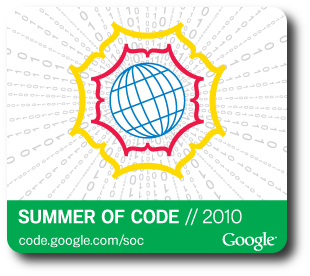Difference between revisions of "GSOC2010AcceptedProjects"
From Nsnam
| Line 52: | Line 52: | ||
* Abstract: Click is a software architecture for building configurable routers. By using different combinations of packet processing units called elements, a Click router can be made to perform a specific kind of functionality. This flexibility provides a good platform for testing and experimenting with different protocols. This project aims to integrate ns-3 with the Click Modular Router so as to enable rapid protocol development. | * Abstract: Click is a software architecture for building configurable routers. By using different combinations of packet processing units called elements, a Click router can be made to perform a specific kind of functionality. This flexibility provides a good platform for testing and experimenting with different protocols. This project aims to integrate ns-3 with the Click Modular Router so as to enable rapid protocol development. | ||
* Wiki Page: [[GSOC2010Click | NS-3 Click Modular Router Integration]] | * Wiki Page: [[GSOC2010Click | NS-3 Click Modular Router Integration]] | ||
| + | * Mid Term Report: [[GSOC2010Click/MidTermReport | NS-3 Click Modular Router Integration Mid Term Report]] | ||
[[Category:GSoC]] | [[Category:GSoC]] | ||
Revision as of 09:34, 6 July 2010
Main Page - Current Development - Developer FAQ - Tools - Related Projects - Project Ideas - Summer Projects
Installation - Troubleshooting - User FAQ - HOWTOs - Samples - Models - Education - Contributed Code - Papers
- GSoC Frequently Asked Questions
- GSoC Mentors Guide
- GSoC Student guide
- GSoC Student application template
- GSoC 2010 Ideas page | GSoC 2010 Accepted Projects
- GSoC 2009 Ideas page | GSoC 2009 Accepted Projects
- Get in contact with the ns-3 team: ns-developers mailing list | IRC #ns-3 on freenode.net
Contents
Accepted Projects
This page links to more information on the projects accepted for ns-3's 2010 Google Summer of Code effort.
UAN Framework: AUV simulator and power management layer
- Student: Andrea Sacco
- Mentor: Leonard Tracy
- Abstract: One of the priorities in Underwater Networking research, is to have a complete simulation framework. The NS-3 UAN module is a first step in this direction. This project aims to integrate the efforts of UAN module, extending it to make a simulation framework that researchers will be able to use for their aims. The extension will consists of an Autonomous Underwater Vehicle (AUV) simulator (navigation and movement) and a power management layer.
- Wiki Page: UAN Framework: AUV simulator and power management layer
ns-3-OpenFlow
- Student: Blake Hurd
- Mentor: Josh Pelkey
- Abstract: This project will enable ns-3 simulations to use OpenFlow switches (McKeown et al.), widely used in research. OpenFlow switches are configurable via the OpenFlow API, and also have an MPLS extension for quality-of-service and service-level-agreement support. By extending these capabilities to ns-3 for a simulated OpenFlow switch that is both configurable and can use the MPLS extension, ns-3 simulations can accurately simulate many different switches
- Wiki Page: ns-3-OpenFlow
MAC and PHY models for LTE
- Student: Giuseppe Piro
- Mentors: Nicola Baldo
- Abstract: Long Term Evolution represents an emerging and promising technology for providing a broadband ubiquitous Internet access.
Unfortunately, no ns-3 modules have been developed to simulate LTE networks. This project consist of a development of a framework to simulate LTE networks on ns-3, composed by (i) a standard compliant LTE PHY layer, (ii) two LTE network devices (UE and eNB), (iii) a Bearer Manager and a MAC Queue structure, and (iv) a Frame Manager and a Downlink Resource Allocation.
- Wiki Page: MAC and PHY models for LTE
NS-3 Click Modular Router Integration
- Student: Lalith Suresh Puthalath
- Mentor: Ruben Merz
- Abstract: Click is a software architecture for building configurable routers. By using different combinations of packet processing units called elements, a Click router can be made to perform a specific kind of functionality. This flexibility provides a good platform for testing and experimenting with different protocols. This project aims to integrate ns-3 with the Click Modular Router so as to enable rapid protocol development.
- Wiki Page: NS-3 Click Modular Router Integration
- Mid Term Report: NS-3 Click Modular Router Integration Mid Term Report
